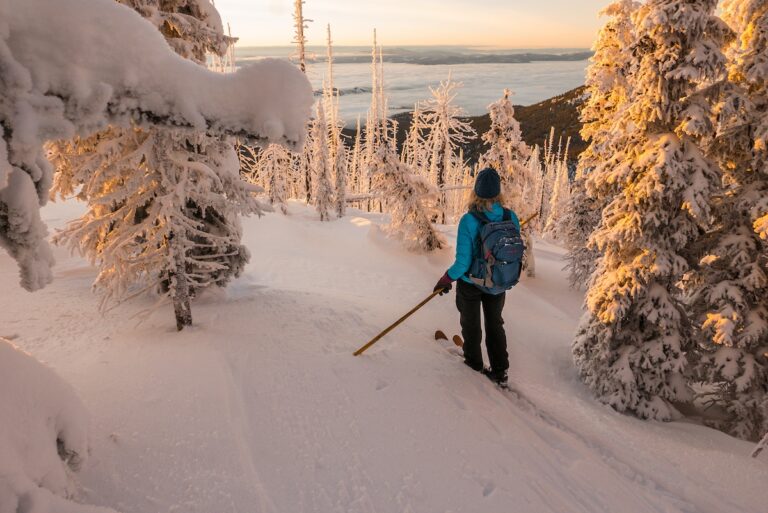For thousands of years people have enjoyed the little peninsula upstream from the confluence of Latah Creek and the Spokane River. The name “People’s Park” says a lot about the long history of this place that separates the Spokane River from the downstream reach of Latah Creek (also known as Hangman Creek).
People’s Park is covered with grasses, wild rose, serviceberry, currant, Oregon grape, and masses of willows along the creek’s edge. There are patches of reed canary grass and scraggly old prune and apple trees. An assortment of deciduous trees – mostly maples and locust – grow under ponderosa pine. On one shore, the stream bank is sandy and muddy while the other is stony. A network of old roadways and braiding trails quilt these diverse patches together. I have seen porcupines, beaver dams, deer poop, bald eagles, and an assortment of birds and water fowl.
Historically, several different salmon species came by the millions up the Spokane River to pool below the barrier of Spokane Falls. Many salmon also travelled up Latah Creek. The peninsula separating the creek and river was an important fishing site for the Upper Spokanes, who created a settlement for weeks while fish were caught and dried for winter stores. Community ethics of fairness, sharing, cooperation, and rituals for keeping the waters clean were presided over by respected Salmon Chiefs. Many fishing techniques were employed: from building stone weirs out into the current to corral giant salmon for spearing to using basket fish gates and traps. Early white explorers and settlers observed the Upper Spokanes sharing the abundance of the Latah Creek fishery with other regional tribes, including the Coeur d’Alenes and SanPoils.
In 2005, Eastern Washington University’s Archeological and Historic Services conducted an exploration near the entrance to People’s Park. Carbon dating of buried fireside hearths, bones, and stone tools verified the site was an established settlement at least 8,000 years ago. (For reference, at roughly that time agriculture was just creeping into Eastern Europe from early farming settlements in the Near East. Writing wouldn’t be invented for another 2,000 years.)
When asked about the astonishing antiquity of human habitation at People’s Park, Spokane Tribal member Buzz Gutierrez was quoted in the December 6, 2006 Spokesman Review as saying, ”The significance to me is: we knew it was there; now you know it is there.”
Native people continued to gather and fish at the confluence in spite of discouragement from some white settlers building up the City of Spokane around them. In 1911, Little Falls Dam on the lower Spokane River blocked further passage of salmon and steelhead up to Spokane Falls.
As the City of Spokane grew, the peninsula was part of a neighborhood called the West Grove Addition; near above it towered “High Bridge,” the Union Pacific-Milwaukee Road train trestle. The neighborhood included 80 or more houses – yet the confluence area was still considered part of “River Gorge Park,” a city-wide park envisioned by the Olmsted Brothers in 1907.
When the World’s Fair “Expo” transformed Spokane in 1974 – the West Grove neighborhood, and High Bridge were dismantled, and the peninsula became People’s Park, a designated “Transient Youth Camp” for the homeless and hippies coming to Spokane for the Expo celebration. City Parks anticipated 30 or 40 residents but soon had 400 and then 1,800! This improvised, alternative lifestyle village included a free kitchen, a drop-in health clinic, community gardens, and a marketplace to sell hand-made crafts. The community mostly policed itself and maintained a friendly relationship with local police to help with trouble makers. The values of sharing resources within a peaceful, diverse community, and Expo’s environmental theme of respecting the earth, echoed through millennia in this special place.
Since Expo, People’s Park has developed a reputation as a place with the possibility of stumbling across partying, nudity and other illegal activities. When the Sandifer Bridge was built in 2004, with one end at the entrance to People’s Park, the perceived fringes of society began sharing the park more and more with families, casual hikers, dog-walkers and anglers.
With Spokane Tribal approval, the City of Spokane has plans for a few amenities and interpretive signage to be added near the parking lot with a light touch on the land and no digging or paving.
Take a walk through People’s Park this spring and explore trails in the city that have the feeling of being deep in nature with a somewhat unpredictable environment. You will walk in ancient footsteps, and traditions of sharing, hospitality, fair play, and respect for the earth. But just enjoy your walk and keep an eye out for wildlife and anything starting to bloom. //
Editor’s Note: People’s Park is an amazing urban natural area with fun trails for hiking, running and mountain biking, but to keep the area safe and clean for others, please do your part by helping to pick up trash and report any illegal or suspicious activity (including any digging, camping or campfires) to Spokane Parks and Recreation (755-2489) or Crime Check (456-2233).













